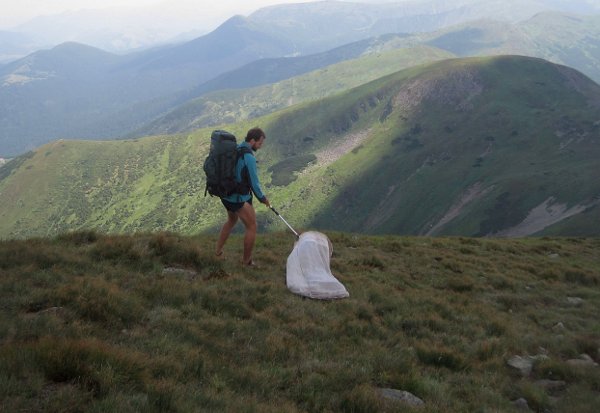Oleksandr Varga - PhD student at the Schmalhausen Institute of Zoology in Kiev, Ukraine.
Oleksandr's research focuses on the systematics and biogeography of the Ichneumonoidae parasitoids (Hymenoptera). Ichneumonidwasps is one of the largest groups of insects: there are about 26,000 described species, but most are still undescribed and regional faunas are also poorly known. Some of ichneumonids are specialist, but many are also generalist parasitoids; lots are used in successful biological control programs against insect pests.
The main area of my research is a subfamily Pimplinae, one of the most numerous group of Ichneumonidae. Pimplins attack wide variety of insect, and occasionally spider hosts. Their larvae act as koino- or idiobionts, gregarious or solitary, ecto- or endoparasitoids; they attack eggs, larvae or pupae of their hosts. Another area of my interests is a complex of paraisitoids of wood-boring beetles, includingchiefly ichneumonid subfamilies Xoridinae, Acaenitinae, Poemeninae, partly Campopleginae, Cryptinae and Pimplinae.
Oleksandr has been working on ichneumonids since 2009 and has now almost finished his PhD thesis about Pimplinae wasps from the Carpathian Mountains. Since 2014 he's been working on revision of the Pimplinae collection deposited in the Alexandru Ioan Cuza University of Iasi (Romania). This project is supported by the Erasmus Mundus foundation. The main aim of the project is to revise all Pimplinae types, described by the Romanina authors (R. Constantineanu and C. Pisica) and to understand how many species really occur in the Carpathians, both Romanian and Ukrainian. He's also working on conservation of parasitoids. Oleksandr started his project ‘Diversity and Conservation of Ichneumon-wasps Communities as indicators of the Condition of the Natural Carpathian Forest Ecosystems, Ukraine’, supported by the Rufford foundation, last summer www.rufford.org/projects/alexander_varga. During this project Oleksandr has tried to collect as much ichneumonidae material as possible using different methods e.g. pan traps, malaise traps etc. to understand how biodiversity rich this unique area containing the last remaining stands of montane primary beech forest. In addition he provided field training for the staff and foresters of nature protection areas and for students. He hopes the results of this project will help to include some rare large Ichneumonid species into the Red databook of Ukraine and under protection programs in nature protection areas as Carpathian Biosphere Reserve.
This is Oleksandr's first visit to Station Linné and during his time here he has sorted and identified mainly species or morphospecies of a large part of ichneumonidae material (subfamilies Acaenitinae, Pimplinae, Poemeniinae, Xoridinae) which have been collected in SMTP. This material will help him better understand morphological variations and habitat distribution of many species, which occur in the Carpathians also. he hopes most of these specimens will be included in the future revision of the European Pimplinae that he's working on.
